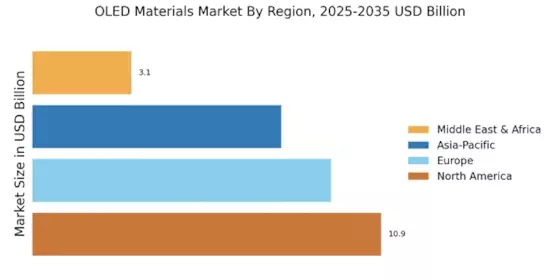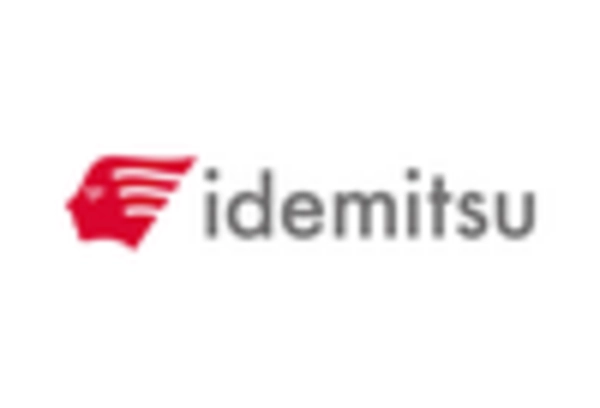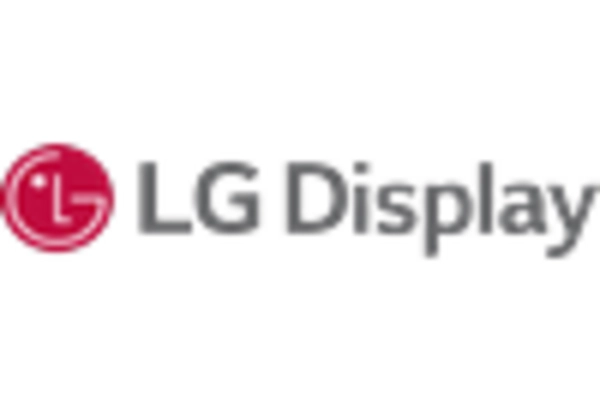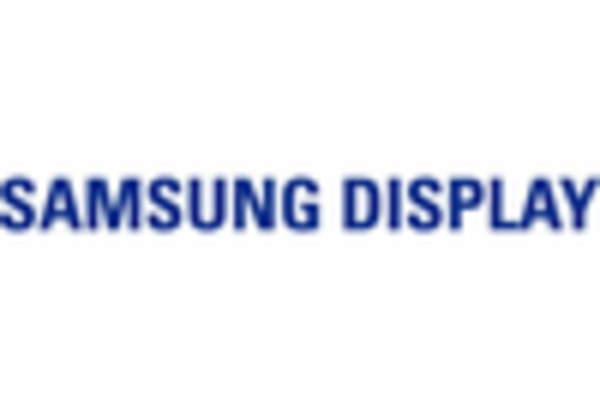Rising Demand for Energy Efficient Displays
The OLED Materials Market is experiencing a notable surge in demand for energy-efficient display technologies. As consumers increasingly prioritize sustainability, manufacturers are compelled to adopt OLED technology, which offers superior energy efficiency compared to traditional LCDs. Reports indicate that OLED displays consume approximately 30 to 50% less power than their LCD counterparts, making them an attractive option for both consumers and manufacturers. This shift is further fueled by the growing popularity of smart devices, where battery life is paramount. Consequently, the OLED Materials Market is poised for growth as manufacturers seek to enhance their product offerings with energy-efficient solutions that align with consumer preferences.
Technological Advancements in OLED Materials
Innovations in material science are significantly impacting the OLED Materials Market. Recent developments in organic compounds and phosphorescent materials have led to improved performance characteristics, such as enhanced brightness and color accuracy. For instance, advancements in blue OLED materials have resulted in longer lifespans and better efficiency, which are critical for consumer electronics. The introduction of new materials is expected to drive down production costs while improving the overall quality of OLED displays. As a result, manufacturers are likely to invest heavily in research and development, further propelling the growth of the OLED Materials Market as they strive to meet the evolving demands of consumers.
Expansion of OLED Applications Beyond Displays
The OLED Materials Market is witnessing an expansion of applications beyond traditional display technologies. Industries such as automotive, lighting, and wearables are increasingly adopting OLED technology due to its flexibility and superior visual performance. For example, OLED lighting solutions are gaining traction in architectural and automotive lighting, providing unique design opportunities and energy savings. The automotive sector, in particular, is exploring OLED displays for dashboard interfaces and rear lighting systems, which enhances both aesthetics and functionality. This diversification of applications is likely to create new revenue streams for the OLED Materials Market, as manufacturers adapt their offerings to cater to these emerging sectors.
Government Initiatives Supporting OLED Technology
Government initiatives aimed at promoting energy-efficient technologies are playing a crucial role in the growth of the OLED Materials Market. Various countries are implementing policies and incentives to encourage the adoption of OLED technology in consumer electronics and lighting applications. These initiatives often include funding for research and development, tax incentives for manufacturers, and regulations that favor energy-efficient products. As governments recognize the environmental benefits of OLED technology, the support provided is likely to stimulate investment in the OLED Materials Market, fostering innovation and accelerating market growth. This supportive regulatory environment may also enhance consumer awareness and acceptance of OLED products.
Increasing Consumer Awareness and Preference for OLED Technology
Consumer awareness regarding the advantages of OLED technology is steadily increasing, which is positively influencing the OLED Materials Market. As consumers become more informed about the benefits of OLED displays, such as superior contrast ratios, vibrant colors, and faster response times, their preference for OLED products is likely to grow. This trend is particularly evident in the television and smartphone markets, where consumers are willing to invest in higher-quality displays. Market data suggests that OLED televisions are projected to capture a significant share of the premium TV segment, further driving demand for OLED materials. As consumer preferences shift towards high-performance displays, the OLED Materials Market is expected to benefit from this growing inclination.


















Leave a Comment